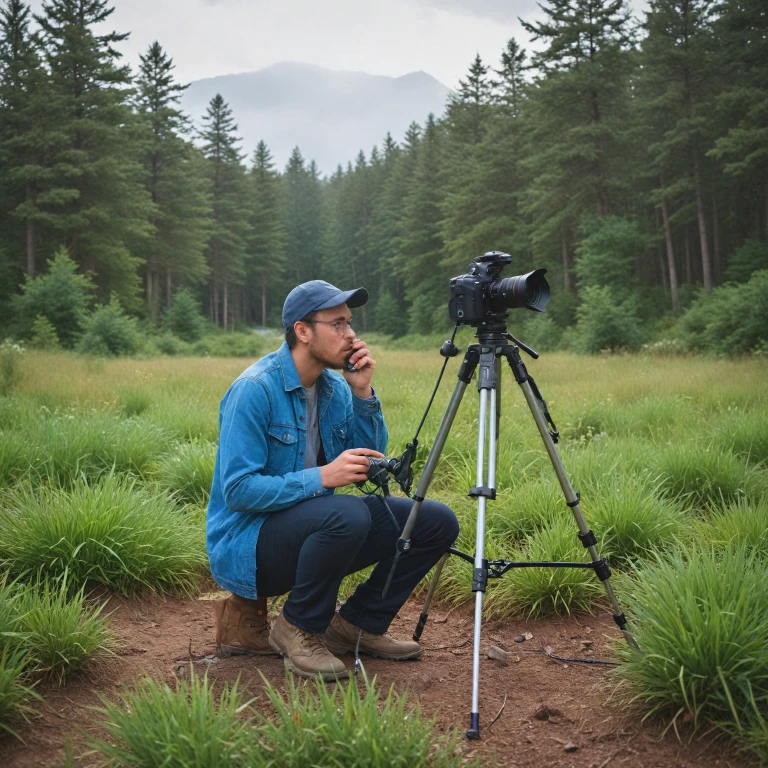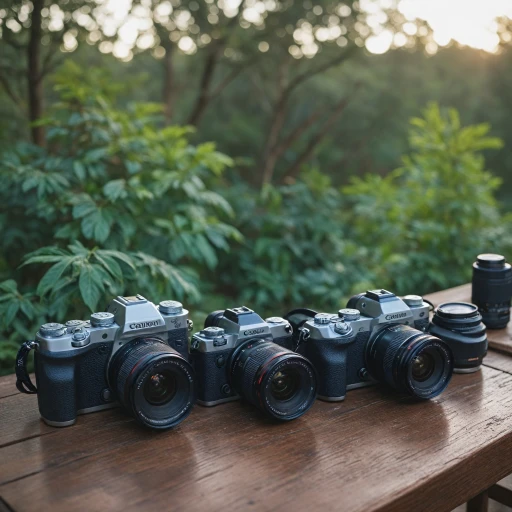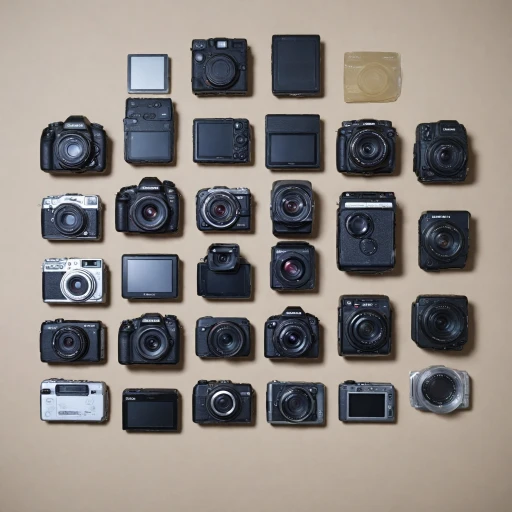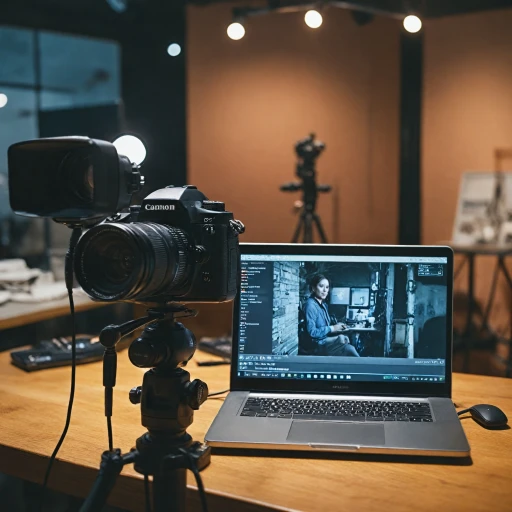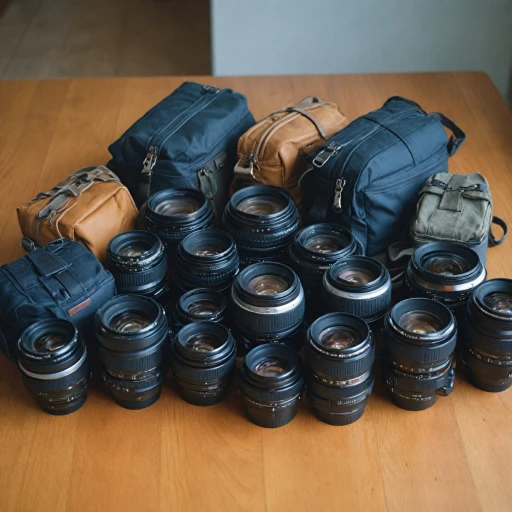
Understanding Tripod Basics
What You Need to Know About Tripod Components
When it comes to photography, a tripod is an essential tool that can significantly enhance your camera’s capabilities. As a beginner, understanding its basics is the first step in achieving the best outcomes from your investment. Tripods are typically comprised of three main parts: the legs, the center column, and the tripod head, each playing its own role in stability and usability. Most tripods feature adjustable legs that can be extended to reach the maximum height you need for various photography requirements. This is crucial if you are looking to bring your camera to eye level. Additionally, the number of leg sections affects portability and comes in handy for the photography enthusiast who loves to travel. Next, the center column allows for further height adjustments. Depending on the design, some tripods offer horizontal adjustability, which can be advantageous for shots requiring unique angles or perspectives. ### Choosing Your Tripod Head The tripod head is where your camera will rest and remain mounted during use. Familiarity with different types of heads, like a ball head or more complex alternatives, enables you to select the most suitable for your photography style. Options such as the Vanguard Alta or Manfrotto heads offer versatility and quick adjustments, making them popular choices among beginners. For those keen on digital photography, your understanding doesn't end here. To better grasp how a tripod can enhance your photographs, explore more insights here. A tripod is often one of the first items a budding photographer will purchase, generally driven by the desire to produce sharper images. Therefore, finding a unit that withstands various load capacities, voluntarily boosted by materials like carbon fiber or aluminum, will be beneficial for spontaneous and longer sessions. The foundation of an excellent tripod is recognizing the key features and materials that contribute to its stability, weight, and usability—all of which we'll delve into further as you continue reading. The right tripod not only supports the camera but elevates your photography to highlight its best potential.Key Features to Look for in a Beginner Tripod
Essential Tripod Features for Novice Users
A tripod is a vital tool in photography, providing the stability needed for capturing sharp and steady images. For beginners, understanding the key features to look for can identify the best tripod for capturing stunning photos while also staying user-friendly and affordable. Here's a comprehensive guide to what you should prioritize when selecting a tripod.
- Weight and Portability: A lightweight design travel tripod, such as those made from aluminum or carbon fiber, will be essential if you intend to move frequently. For example, the carbon fiber tripods tend to be lighter yet slightly more expensive. Consider something like Leofoto tripods that offer excellent weight management and portability.
- Load Capacity: Ensure your chosen tripod can comfortably support your camera's weight, especially when using heavier lenses. Overloading a tripod beyond its capacity can lead to instability and potential equipment damage.
- Height Adjustability: The maximum height and the design of the center column of a tripod impact its versatility. Whether you're shooting at eye level or need a tripod that goes low for unique angles, the flexibility of adjustable leg sections and the presence of a center column are crucial.
- Stability and Leg Sections: Tripods generally come with varying leg sections, affecting both the stability and folded size. While more sections allow for greater compactness when traveling, fewer sections often translate to enhanced stability when fully extended.
- Tripod Head Type: Consider whether a ball head or a pan-tilt head suits your style of photography. The former allows fast adjustments, while the latter can offer more precise maneuvering.
When selecting a beginner's tripod, it's essential to balance between features and budget. Keep these factors in mind to find a tripod that meets your photography needs, while also being user-friendly and reliable.
Material Matters: Choosing the Right Tripod Material
Material Choices for Sturdy Support
When selecting the ideal tripod material, weighing the options of aluminum versus carbon fiber is crucial. Aluminum tripods are generally heavier, offering a stable base for your camera under windy conditions or unsteady ground. However, their weight can be daunting for those who love to travel, making carbon fiber an appealing alternative. Carbon fiber tripods are known for their lightweight properties, making them excellent companions for travel photographers. Brands like the Manfrotto and Vanguard Alta series have impressive options in this category. Despite its weight advantage, carbon fiber tripods tend to be more expensive, meaning you'll need to balance your budget considerations. If you're on the lookout for budget-friendly options, some aluminum tripods offer the desired stability without breaking the bank.Determining the Right Weight and Height
An important factor in tripod selection is understanding the tripod's weight and maximum height. Lighter tripods are more portable but may sacrifice stability, while heavier models can bear more load capacity and provide secure anchors for your camera even in challenging conditions. It's essential to choose a tripod that matches your height needs. Generally, a tripod that extends to your eye level with the camera mounted is considered ideal. Check your required maximum height against the specs of popular tripods, such as the Element MII series or the compelling offerings from Three Legged Thing Punks.Considering Additional Features and Specifications
Tripod heads are a pivotal aspect of your photography experience. Various head designs, such as the ball head and the more traditional pan-tilt head, cater to different shooting styles. Ball heads, found in models like Manfrotto's and Thing Punks' designs, offer quick adjustments and rotation flexibility, aiding in swiftly changing shots without repositioning the tripod itself. Additionally, evaluate the tripod’s leg sections. More leg sections allow for compact packing, beneficial for travel, but too many might compromise sturdiness. Tripods with a center column, such as the Vanguard Alta Pro, offer extra height and flexibility; however, extended columns may destabilize your camera setup, especially at full extension. Consider these nuances to refine your choice, ensuring the best tripod selection for your photography ventures. For a deeper understanding, explore the capacity of a 32GB SD card for photos to complement your tripod selection.Budget-Friendly Options for Beginners
Budget-Friendly Tripod Choices for Starters
Navigating the sea of tripods available today can seem overwhelming, especially when you're starting and have a budget to stick to. Beginners should focus on finding tripods that effectively balance cost with essential features that can enhance their photography experience. When seeking cost-effective tripods, consider models that offer the best value without compromising quality. Here’s a closer look at some options that are friendly on the wallet:- Material Influence: While carbon fiber tripods tend to be lighter and less prone to vibrations, aluminum alternatives offer stability at a lower price. Vanguard Alta and Manfrotto tripods often provide competitive options in this category, ensuring durable use without breaking the bank.
- Design Simplicity: Look for travel tripods like the 'Element Mii' that prioritize lightweight design and efficient foldability. Such features simplify carrying the tripod around without overwhelming your setup financially. The emphasis here is on maximum height versatility without hindering stability.
- Tripod Heads: Cheaper models can sometimes come with a fixed tripod head which limits functionality. Explore options that allow switching to a ball head, enhancing control over your camera's position. Again, the Manfrotto and Vanguard brands deliver reliable flexibility and dependability.
- Leg Sections and Center Column Features: Ensure the tripod offers enough leg sections for desired height yet maintains a manageable weight. Adjustable center columns can add versatility without the need for extra expenditure. A few options may even support a reliable load capacity for heavier camera setups without moving to premium pricing.
Setting Up Your Tripod for Optimal Use
Optimal Setup Techniques for Your Tripod
Setting up your tripod correctly is essential to ensure stability and achieve the best possible results in your photography. Here’s a guide to setting up your tripod for optimal use:- Choose a Stable Surface: Begin by placing your tripod on a stable and even surface. Soft ground or uneven surfaces can compromise stability, leading to blurred images.
- Extend the Legs Carefully: Start with extending the thicker leg sections before the thinner ones. This method enhances the tripod's stability. For trips, compact tripods like the Manfrotto Element MII or Vanguard Alta are excellent options with adjustable leg sections to accommodate different terrains.
- Center Column Adjustments: Keep the center column low to increase stability. Elevating it should only be a last resort, as an extended center column can cause vibrations.
- Secure the Ball Head: Ensure that the ball head is tightly secured once you've composed your shot. This action prevents unwanted movement that could blur photos.
- Balance the Load Capacity: Adhering to your tripod's load capacity is vital. It avoids tipping over due to excess weight, especially when using heavier cameras or lenses.
- Weight Distribution: For better stability, hang a camera bag or a weight from the center column. This technique adds weight to the tripod's base, enhancing stability and reducing camera shake.
- Check the Tripod's Height: Adjust the tripod to eye level without extending the center column, if possible. This adjustment ensures comfort and better control while composing shots.
Common Mistakes to Avoid When Using a Tripod
Common Pitfalls to Steer Clear Of
Using a tripod might seem straightforward, but there are several common mistakes that can hinder your photography experience. Understanding these pitfalls can help you make the most of your tripod, whether you're using a Manfrotto, Vanguard Alta, or any other brand.
- Ignoring Load Capacity: Always check the load capacity of your tripod. Overloading it with a heavy camera or lens can lead to instability and potential damage. Ensure your tripod can handle the weight of your equipment, including any additional accessories.
- Improper Leg Adjustment: Not extending the legs evenly can cause imbalance. Make sure each leg is adjusted to the same height, especially on uneven terrain. This is crucial for maintaining stability and achieving the best image quality.
- Neglecting the Center Column: While extending the center column can give you extra height, it can also reduce stability. Use it sparingly and rely more on the legs for height adjustments. The center column should be your last resort for reaching maximum height.
- Overlooking the Tripod Head: The tripod head is vital for smooth camera movements. Ensure it's securely attached and properly adjusted to avoid shaky shots. A ball head can offer flexibility and ease of use, especially for beginners.
- Not Securing the Legs: Failing to lock the leg sections can lead to unexpected collapses. Double-check that all locks are secure before mounting your camera.
- Choosing the Wrong Material: The material of your tripod affects its weight and durability. Carbon fiber is lightweight and sturdy, ideal for travel, while aluminum offers a budget-friendly alternative. Consider your needs and travel habits when selecting a material.
- Forgetting to Level: A level tripod is essential for straight horizons. Use the built-in bubble level, if available, to ensure your setup is perfectly aligned.
Avoiding these mistakes will help you get the most out of your tripod, enhancing your photography skills and ensuring your equipment remains in top condition.
